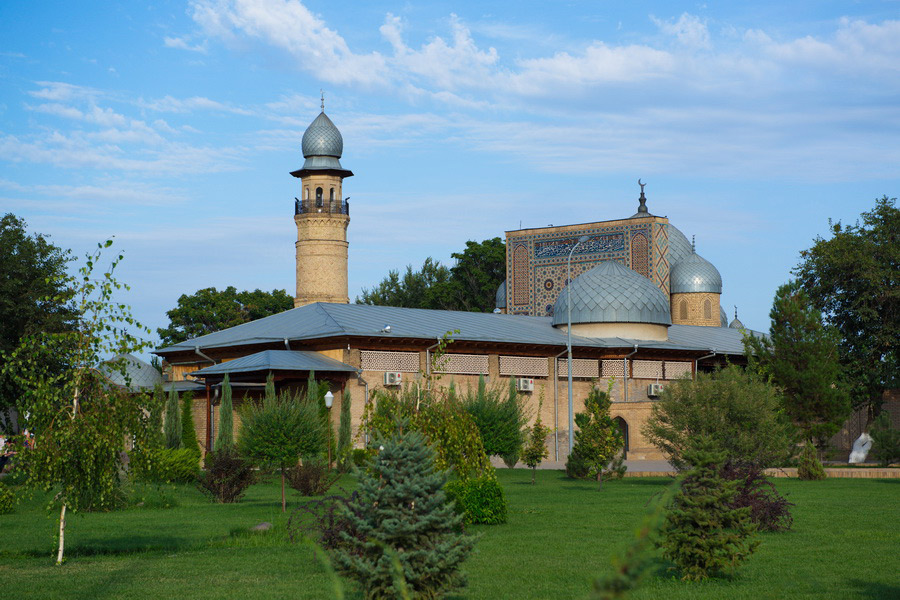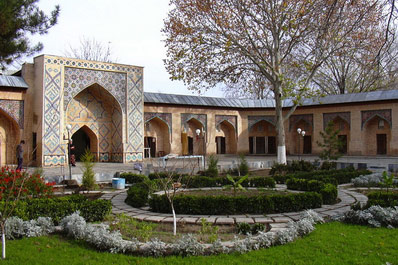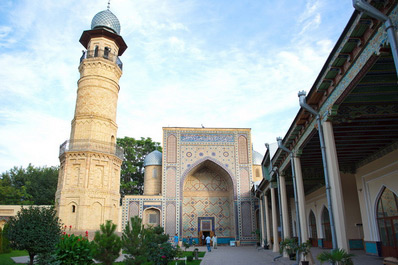Architectural Complex Zangi-Ata, Tashkent

The Zangi-Ata architectural complex is located in the Zangi-Ata settlement near Tashkent. This monument represents a huge historical and art value. The ensemble has been built on the location of the burial place of sheikh Aj-Hodzha, nicknamed Zangi-Ata, which means "black", living from the end of 12th to first half of 13th century. He was the fifth murid of Sufi Hodzha Ahmad Jassavi, who was considered the spiritual head of all the Turkic tribes of Central Asia and Kazakhstan, and the pupil of mystic poet Suleyman Khaki - aka Bakyrgani. As the legend says, the beginning of the construction of this ensemble was initiated by Amir Timur. He also constructed the mausoleums of the famous saint Zangi-ata and his wife Ambar-bibi.
The ensemble consists of three territories: an extensive garden, a complex constructed in the 14-19 c. - the mosque, medressa, minaret and the mausoleum of Ambar-bibi. The entrance to the ensemble is accessed through Darvazakhana. It is presented as a portal-dome construction with turrets - (guldasta) on the corners. Darvaza is not large: 6x7m in its lay-out, the premise inside is blocked by an arch "balkhi", the height of the building is 3.3 m., the chord of the portal arch is 4.16 m. and its height is 6.58 m. From the gate up to the entrance in the second court yard runs a path 22 m. length, alongside the Darvazakhana - the entrance to the main complex.
To the south of the path there is a big hauz. In the southwest part of a mosque of Namazgokh type is located. The portal to the Zangi-ata mausoleum leads to the southern corner of the courtyard, the building of which is on the territory of the cemetery. The perimeter of the court yard is laden with khudjra.
Two entrances lead to the courtyard and they are formed as portal-dome premises darvaza-khana. In 1914-15, the original minaret-tower was erected in front of the mosque. The old cemetery adjoins the historical complex from the south. From the southern entrance there is a green path that leads to the mausoleum of Ambar-bibi.



